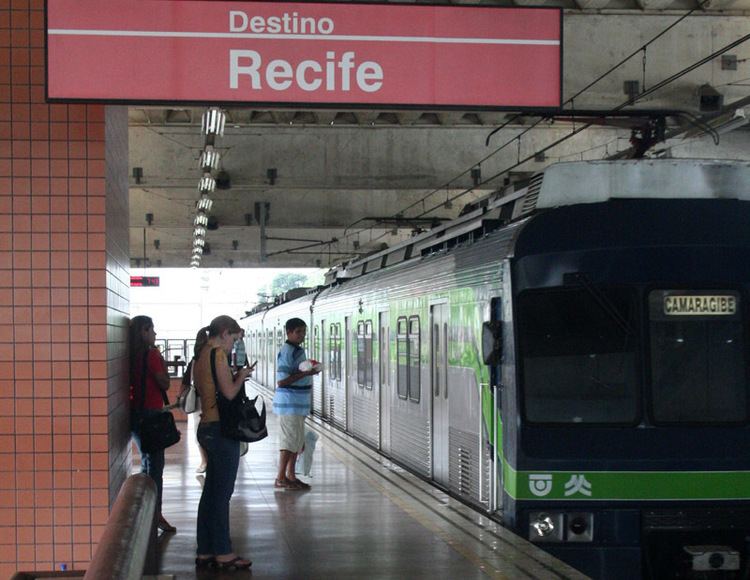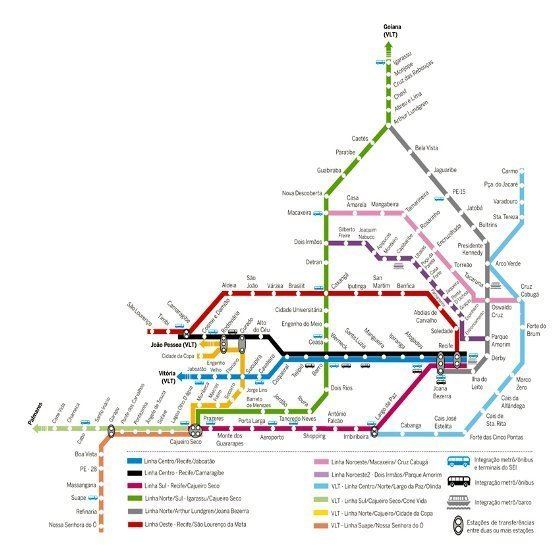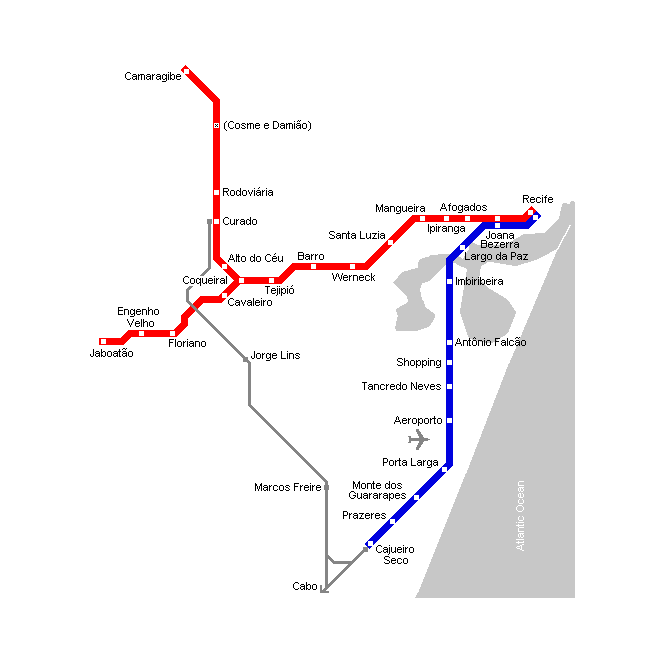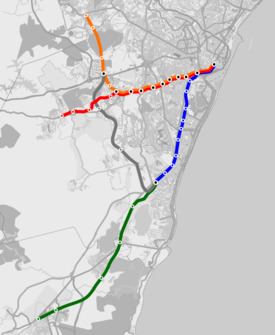Annual ridership US$ 21 mi (2015) Train length 4 cars Number of stations 29 | Daily ridership 225,000 (Metro only) Locale Recife Number of vehicles 40 Began operation March 11, 1985 | |
 | ||
Operator(s) Superintendência de Trens Urbanos de Recife Number of lines 3 (plus one light rail line) | ||
The Recife Metro (Portuguese: Metrô do Recife, commonly called Metrô) is the metro system for the city of Recife in Brazil. It is operated by CBTU/Metrorec and currently serves 29 stations, along 39.5 kilometers (24.5 mi).
Contents

Characteristics
The system formed by the Central Line (itself divided into two lines) and the South Line.

The stations were designed carefully to include various forms of identification. Besides the service of audio messages announcing the name of the stop, there is a different colour used on the walls of every station, and signs are equipped with graphical symbols next to the name that always accompany the maps spread in the buildings.

Trains of the Central Line leaving the station Recife have two distinct destinations: the cities of Camaragibe and Jaboatão dos Guararapes. That is because Center-1 (Camaragibe) and Center-2 (Jaboatão) Lines share the part of the railway between Recife and Coqueiral stations, reusing the route of an old railway track, where the metro system was built.

The average distance between stations is of 1.2 kilometers (0.7 mi) so the typical speed of the train is 40 km/h (25 mph), but the maximum speed is 90 km/h (56 mph). The gauge is 1,600 mm (5 ft 3 in) (Irish gauge) and energy supply for trains is done through aerial catenary.

The system originally had a total of 25.2 kilometers (15.7 mi) of route. After completion of the expansion of the network that occurred from February 2005 to March 2009, the metro grew to its current 39.5 kilometers (24.5 mi) in length.

There is also a 31.5-kilometer (19.6 mi) meter gauge (1,000 mm (3 ft 3 3⁄8 in)) diesel light rail line in Recife. The system also includes several bus lines linked from the terminals of bus/metro integration designated S.E.I (Sistema Estrutural Integrado - Integrated Structural System) through which passengers may continue their travel on the same ticket.
Light rail
In addition, Recife metropolitan area also has meter gauge (1,000 mm (3 ft 3 3⁄8 in)) diesel light rail line:
(*) The light rail train is not included in the metro service, but it under the same administrative company.
